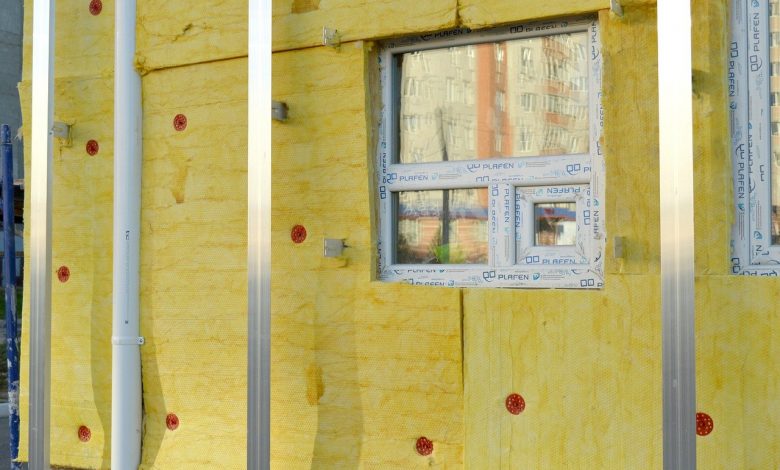
Buildings consume a large portion of the energy supply, primarily for cooling and heating. This is because a place with a well-regulated temperature makes a comfortable place to work at. High energy costs and interrupted thermal comfort are the major problems encountered in buildings regulating indoor temperatures. Insulating buildings can address these issues by minimizing heat transmission rate. Different forms of insulations are available on the market. However, deciding which among the insulations available fit your needs requires careful consideration. While consulting a professional in building construction is best, you must know a few points about selecting the best building insulation.
Factors to Consider When Choosing Insulation for a Building
R-value
R-value is the measure of the resistance of heat flow through a material. It is usually expressed per thickness of the insulation material. Insulation material with a higher R-value performs in keeping energy bills lower than those with lower R-value. Furthermore, installing layers of insulation can increase the R-value.
Building Layout and Construction Type
Walls, floors, and ceilings are where insulations can be installed. For existing uninsulated buildings with concrete floors, the most accessible parts for installing insulation are the walls and roofs. However, if you are planning to insulate the floors, note that the insulation requires an additional elevation depending on the thickness of the insulation material that will be used, which leaves more work to do.
Soundproofing
Insulation also has noise-reduction benefits. Depending on the type, thickness, and density of the insulation material to be used, a building can be soundproof, free of annoying noises from the surroundings. Injection foam and stone wool are some insulation options that can absorb sounds.
Expected lifetime
The expected lifetime of an insulation material must be at least five years. Ensure that the insulation material selected has high moisture resistance and does not degrade easily. Frequent insulation replacement is not economical as it disrupts building operations, causes new material and installation costs, and generates more waste.
Ease of Installation and Cost
The complexity of the insulation installation directly affects the costs. Flexible materials are easier to install than rigid alternatives. However, rigid materials are not as quick and simple to cut as flexible materials and would incur additional labor costs.
Sustainability of Insulation Materials
Choose insulation materials coming from renewable sources to be able to partially or totally recycle them in the future and reduce the need to extract fresh raw materials. Also, ensure that the insulation materials do not emit hazardous substances detrimental to both humans and the environment. Additionally, source insulation materials locally to minimize environmental damages due to their transportation.
Flammability
Some insulation materials are flammable and would require the application of flame retardant for safe use. Ensure that the chosen insulation material will also act as a fire barrier in case of fire accidents.
Types of Building Insulations
The insulation materials available on the market are the following:
Batts, Blankets, and Rolls
These are easy-to-roll and fibrous insulations commonly made from fiberglass, mineral wool, cotton, plastic, or natural fibers. They are widely available and cheap. Mineral wool and cotton have higher R-values than fiberglass because of higher density. Plastic fibers do not burn easily but melt when exposed to fire.
Loose Fill
These materials are made of loose particles of cellulose, fiberglass, or polystyrene beads. They can be blown, packed, or poured into narrow and hard-to-reach places. Cellulose is made from recycled paper and has higher moisture resistance than fiberglass. Cellulose is also flammable when not treated properly. On the other hand, expanded and extruded polystyrene beads in loose-fill are commonly used as an addition to their rigid forms.
Rigid Panels
These are structures affixed to walls or ceilings. They are available in 4 x 8 feet to 8 x 24 feet sizes and half-inch to one-inch thick. They are made from polystyrene, polyisocyanurate, and polyurethane materials. Extruded polystyrene has a higher R-value and is more moisture-resistant and more durable than expanded polystyrene. Both polyisocyanurate and polyurethane have considerably high R-values but require surface addition to be approved safe in fire situations.
Spray Foam
This type of insulation uses spray canisters to spread foam insulation materials into wall cavities. Foam insulation materials such as cement-based foam and phenol-formaldehyde expand during curing, rendering more efficient thermal protection as they can fill the smallest gaps within surfaces. Polyisocyanurate and polyurethanes also come in spray foams and liquid forms.
Each insulation material has its advantages. Prioritize safety when choosing the insulation material for your building. Furthermore, narrow down your insulation options according to insulation requirements, the surface area of insulation, and budget.



